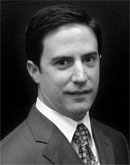Pelton & Crane and KaVo North America Vicente Reynal, President
Vicente Reynal, President

Vicente Reynal (VR): One of the most visible changes has been the expansion and integration of digital technology into the dental office. This new "super highway" of information that integrates seamlessly within the dental practice and provides diagnostic and preventative capabilities simultaneously will transform the quality of oral healthcare.
Technology is evolving very rapidly and there are thousands of new gadgets launched every year. The big gap we have identified is that these products often do not easily integrate into a practice or aren't compatible with existing core equipment. This is a result of these products being developed as individual "islands" and not in concert with the way oral healthcare needs to be provided or in sync with the clinician's existing core equipment.
ID: How, internally and in the broader marketplace, has your company responded to these changes?
VR: We first started with an expansive understanding and commitment to the "voice of the customer." Clinicians encouraged us to ensure some basic products are optimized. Over the past few years we have developed and launched significantly differentiated products that seamlessly integrate the industry's latest technologies. An example of the advancement of these "basic products" is the operatory cabinetry. The Renaissance Collection of dental cabinetry that we launched recently offers the optimal way to integrate new technologies (including E4D CAD/CAM) to create the most efficient operatory setting. Many people forget, but it is very important that technology is located at the right place so the clinician can access it at the right time and in a healthy, ergonomic manner. We then followed with dental light advancement with the Helios 3000 LED operatory light and highly ergonomic dental chairs/units. If a dentist cannot see or effectively access the oral cavity with an optimum ergonomic factor, then the quality of care is not going to be improved. This may sound fundamental, but I cannot emphasize enough how important it is to ensure that the basics are done right before moving into higher technology.
In parallel to recent product launches, our new product research funnel is filled with some amazing technologies that will significantly change how oral health is diagnosed and how procedures are performed. These new innovations will seamlessly integrate into the dental practice and will compliment the latest dental technologies.
ID: What do you see as your biggest responsibility to the marketplace, and why does your choice rank as your top priority?
VR: Our biggest responsibility is the continual creation of technologies and solutions that will help improve the quality, efficiency, and efficacy of oral healthcare. We are passionate about our customers who provide clinical care, education, and philanthropic support. In tandem, we are driven to support our dealer partners.
ID: What product categories-whether preventive, restorative, operative, auxiliary, diagnostic, etc-do you feel are most in need of innovation based on what's currently available?
VR: My choice would be diagnostic and preventive. However, the new solutions in these two spaces need to be developed as a system and well integrated in the practice.
As you very well know, there is much research and scientific studies that advocate for the link between oral health and total body health. I believe our research and development is well positioned to support this effort.
ID: What do you think is the best approach to research, development, and ultimate delivery of needed advancements?
VR: Our approach has been very effective and proven to deliver world-class results. It is a very dynamic and multidimensional process executed in a disciplined environment. Internally we call this process Advanced Product Development (APD).
It starts with the clinician and patient. We have a continuous stream of unique involvement with academia, private practitioners, public sector, and dealer partners that lead us to find unmet and unarticulated needs. We then utilize our global engineering development team to create solutions that best fit these needs. In some cases we use open innovation partners to help fill technological gaps we may have.
ID: How is your company helping to resolve the challenges facing dentistry and oral healthcare today?
VR: We need to continue doing what we do well and that is providing products and solutions that improve efficiency, technology integration, and patient/clinician comfort. This in turn assists the clinician in providing more efficient, accurate, and precise care to their patients.




